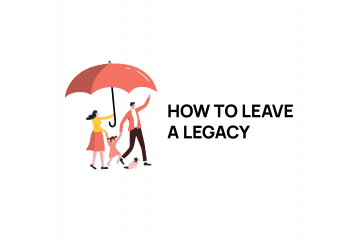We recommend that consumers should mostly ignore life insurance company ratings. We’d like to assume that these ratings are somehow indicative of long term stability, however that’s not assured. In addition Canada has protection mechanisms in place that ensure we don’t need to worry (much) about our life insurace policies.
Reasons for the life insurance company ratings
Consumers seek the reassurance of life insurance company ratings as a proxy for the long term stability of a life insurance company. We want to make sure that when we pass away that the life insurance company is still around and financially able to pay our claim. And that’s a valid concern.
The question we need to ask though, is whether life insurance company ratings are a good predictor of Canadian life insurance companies’ ability to pay future claims. And if they are not good predictors, what predictors should we use?
Questioning the predictions/ratings
Ratings are based on a snapshot of the company’s information today. What we are probably concerned with however is the company’s performance decades in the future.
There are numerous factors that can impact a company that far in the future, that are unknoweable today. Investments in certain assets may appear stable today, and yet crash completely decades in the future. 20 years from now the company may have new management that leads them down a new, less stable path. Economies can change. Even something like offering strong guarantees on products – like a minimum of 5% investment guarantee – can seem like an easy thing today, but if a company is only able to earn 2% in the future, the 5% consumer guarantee may lead to difficulties.
All of these things are unlikely to easily be predicted by looking at a life insurance company’s ratings. In fact determining many of these factors would be based at best on pure speculation only. In other words, there’s many factors contributing to company stability that we simply have no way of measuring.

Canadian company stability
Canadian life insurance company stability is amongst the best in the world. Federal regulators both regulate and monitor life insurance companies’ performance and investments. Life insurance companies are required to invest some of their assets very conservatively. In addition, if there is any symptom that the insurance company has any indication of even coming close to having issues, the regulators will first have a conversation with the insurance company to push them to correct it, and failing that, the regulators will actually take control of the life insurance company. At that point they will either guide it back to profitability or ideally, sell the line of business to another Canadian life insurance company.
It’s worth noting that this takeover by regulators happens far before there’s any danger of a life insurance company going bankrupt or not being able to meet it’s obligations. The regulators do not wait until the final hour before taking corrective action – they do so long before any consumer is likely to actually experience any difficulty. As a result, Canadians can rest assured that our regulators are monitoring and ensuring the stability of Canadian life insurance companies, to the benefit of Canadian consumers.
Other predictors of stability
There are two other predictors of stability that are sometimes sited in addition to life insurance company ratings. The first is company size or age. Unfortunately, neither of these attributes however are necessarily any sort of predictor of long term stability of life insurance companies.
The second predictor is the “Minimum Continuing Capital and Surplus and Requirements” or the MCCSR. This number is expressed as a ratio. Very basically the way to perceive the MCCSR ratio is to consider what would happen to the life insurance company if they stopped and sold everything today. What is the ratio of their assets, over their liabilities and future death claims?
For example, a 200% MCCSR ratio very roughly means they have $2 in assets for every $1 of future liability.
The goverment generally keeps MCCSR ratios in Canada at 150% to 200%. So at a minimum, Canadian companies are required to keep multiples more in assets than they have in liabilities. And as noted, the government steps in long before this ratio even gets close to 100% – thus ensuring there’s always lots of capital to pay life insurance company premiums.
The MCCSR ratio is not necessarily related to size. In 2013, Manulife, one of Canada’s largest life insurance companies had an MCCSR ratio of 211% (up 7% from the previous year). Conversely, UL Mutual, a small Canadian life insurance company few have heard of, had an MCCSR ratio of 300%. Which MCCSR ratio is better, or a better indicator of financial stability? We would suggest that in practice, both MCCSR ratios in conjunction with government oversight are more than sufficient for Canadian life insurance companies.

But still…..
So what if the worst case scenario happens? Despite all our best efforts, the company we pick goes belly up 20 years from now. Now what?
Well, even more good news for Canadians concerned about their future life insurance benefits. All Canadian life insurance companies that retail life insurance belong to an association called Assuris. This association collectively guarantees your life insurance policy, subject to certain minimums. Your individual life insurance policy is at a minimum guaranteed 100% for the first $200,000 of coverage, and a minimum of 80% of everything over $200,000.
In practice no consumer has ever lost a dollar in life insurance death benefits. We have had four failures in Canadian history, 3 of them were with smaller companies and one was for one of Canada’s larger insurance companies (which coincidentally, had a strong rating just prior to the government takeover).
Summary: Life Insurance Company Rating
So we have strong government oversight of life insurance companies on an ongoing basis. Companies are required to keep assets much higher than their liabilities. The government steps in long before assets are lower than liabilities. And even in the worst case, Assuris guarantees that we have almost all of our life insurance death benefits. As a result of all that, for the most part we ignore life insurance company ratings. If you are running life insurance quotes, don’t be put off by the lack of a rating. Or if you are, then simply drop down to the next least expensive life insurance company that has a rating that you’re comfortable with. Alternatively, for coverage amounts in excess of $1,000,000 you may consider splitting your life insurance policy amongst a variety of insurers.
Questions? Concerns? Don’t hesitate to call 1-877-344-4011.




